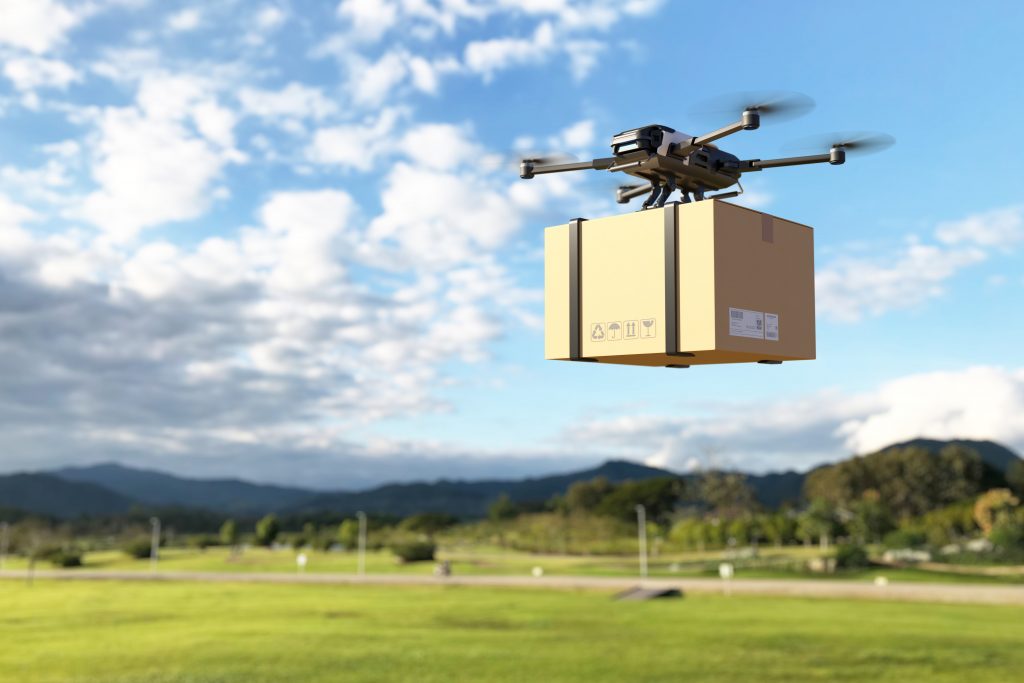
From delivery drones to spy drones to Unmanned Aerial Vehicles, drones are spreading in cities around the world, sometimes for nefarious purposes. (Source: 3D illustration by Adobe Stock)
Anti-Drone Technology Becomes Lucrative Response to Their Increasing Presence
Charlie Campbell, a correspondent in the Singapore office of Time Magazine, recently wrote about the booming business of taking down drones. He interviewed TRD CEO Sam Ong on his billion-dollar worldwide business selling technology to bring down drones of all shapes and sizes. TRD stands for Tiny Red Dot. Ong claims “For TRD, our motto is ‘making life safer.’”
The article details how drones are being used in the Ukrainian-Russian war and in other hot spots around the globe.
The invasion of Ukraine has raised the profile of drone warfare, with some 600 unmanned aerial vehicles (UAVs) from both sides estimated to take flight above the country daily. The downing of a U.S. military drone by a Russian fighter highlights the potential consequences. However, war is only one dangerous use for drones.
“Commercial drones are typically sold with preset ‘geofencing’ that prevents their flight near sensitive locations—however, these guardrails are easily hacked. In recent years, drones have smuggled drugs across borders and into prisons; disrupted countless sporting events; and attempted to assassinate Venezuelan President Nicolás Maduro. In June, a kamikaze drone struck Russia’s Novoshakhtinsk oil refinery, sparking a large blaze. UAVs have proven a regular menace at airports. (Closing Dubai International Airport for a drone incursion, for example, costs $100,000 every minute.) Drone threat intelligence firm DroneSec recorded 2,554 major illicit drone incidents in 2022—a 60% year-over-year rise.”
The article also points out that there are two ways to bring down a drone. You can jam its technology to crash it or alter its path. Or you can do a hard kill by shooting it down or train eagles to attack it like some have been doing in the Netherlands. Ong’s anti-drone business involves deploying either fixed, vehicle-mounted or hand-held Orion “drone-slayer” device that interferes with drones’ internal navigation and forces them to either drop or veer off-course.
“Drone and anti-drone systems are a constant technological cat and mouse, similar to virus and antivirus software. As soon as a new drone comes on the market, Ong orders his team to purchase it so they can see how well their systems cope and make necessary adjustments. Then you have the prevalence of DIY drones—cobbled together from parts ordered online—that may not behave according to any previously encountered. ‘I always ask clients, ‘how long for approval, tender, evaluation?’ says Ong. ‘Because in one year the system may be obsolete.’”
Wild West in the Skies
Another issue about drones, even the ones that are useful, is the regulations that define and oversee any encounters with drones. Since they are considered aircraft you can’t just shoot them down, according to most regulations. Most drones use the same frequencies as low-flying aircraft. If you jam a drone you may jam an aircraft you never intended to. That disaster is just unthinkable but possible.
“The law is just really not clear about your rights in relation to aircraft flying above your property,” says Robert Heverly, an associate professor at Albany Law School, and an expert on U.S. drone regulations. “Something is going to need to be sorted out by the courts.”
A lot more deliveries are going to be introduced into our lives in the skies above. Amazon, Walmart, and several medical delivery companies have already begun using drones in civilian airspace.
How to keep Americans safe from UAVs is a headache for policymakers. In the U.S., operators of all but the smallest drones require a Federal Aviation Administration (FAA) license, though enforcement is lax. Powerful hobby drones, such as those produced by Shenzhen-based DJI, can be bought online with just a couple of clicks. It’s then relatively simple to mount these with sensors, payloads, or simply a grenade for a rudimentary kamikaze attack.”
The future of drones is very much in question currently. They are still relatively rare for most of us. But the experts predict that the industry was worth some $1.1 billion last year and is projected to grow to $7.4 billion by 2032. The regulations to protect civilians are in question, and the problem with using AI-driven drones in the United States could be the potential for some of the owners of 400 million guns to shoot them down. At least two states have limited the use of drones—banning Chinese drones used by police in Florida and flying drones for livestock facility surveillance in Iowa.
read more at time.com







Leave A Comment